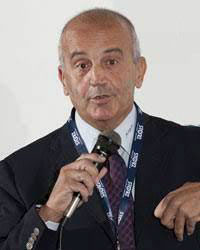

Title
New diagnostic approach to Eagle Syndrome
Abstract
Eagle Syndrome is a rare symptomatic condition generally caused by abnormal elongation of the styloid process or calcification of stylo-hyoid ligament. Eagle Syndrome is easily misdiagnosed due to its vague symptoms of cervico-facial pain, able to mimic other possible causes such as temporomandibular joint disease, migraine headaches, and cranial nerves neuralgias. The anatomical relationship between the Styloid Process and muscular, vascular and neural structures with which Styloid Process can take contact, differs between different head and neck movements. Tilting, Flexo-Extension and Rotation analysis allowed us to define the Eagle Syndrome as a “Dynamic-Positional” condition. Any tool, among those suggested in literature, from Angio-CT to Trans-Oral Carotid Artery Ultrasonography, have to be performed according to the dynamic/positional pathogenesis of the Syndrome. We believe that a change of paradigm in the study of neck structures shifting our approach from a static to a dynamic mode is needed.
Objectives:
- Eagle Syndrome is still a challenging diagnosis due to the different symptom pattern & relative lack of knowledge.
- A multidisciplinary approach is strictly requested
- The importance of imaging in different positions of the head is mandatory, as Eagle Syndrome is a positional syndrome
- Styloid process area should be included in any examination of patient with orofacial symptoms and in patients with suspicion of Internal Carotid Artery or Ingernal Jugular Vein impingement
Prof. Francesco Saverio De Ponte, born in Roccarainola, Naples, in 15/08/1958. Achieved Dentistry and Dental Prothesis Degreee and Medicine and Surgery Degree at the University of Rome “La Sapienza“ between 1984 and 1999 and obtained Maxillo Facial Surgery Specialization afterwards at University of Rome “La Sapienza“. Possess wide-ranging experience on craniofacial deformities, traumatology and oncology of the head and neck district and has attended more than 1500 surgeries of the mentioned areas of expertise. Currently Full Professor of Maxillo-Facial Surgery and Director of the Specialization School of Maxillo-Facial Surgery at the University of Messina, Director of the Maxillo-Facial Surgery unit at the University Hospital “G. Martino” of Messina. Author of more than 130 researches on national and international journals and speaker on several national and international congresses. Active member of Società Italiana di Chirurgia Maxillo Facciale (SICMF) and Italian Councillor for the European Association of Cranio Maxillo Facial Surgery (EACMFS).
Title
New diagnostic approach to Eagle Syndrome
Abstract
Eagle Syndrome is a rare symptomatic condition generally caused by abnormal elongation of the styloid process or calcification of stylo-hyoid ligament. Eagle Syndrome is easily misdiagnosed due to its vague symptoms of cervico-facial pain, able to mimic other possible causes such as temporomandibular joint disease, migraine headaches, and cranial nerves neuralgias. The anatomical relationship between the Styloid Process and muscular, vascular and neural structures with which Styloid Process can take contact, differs between different head and neck movements. Tilting, Flexo-Extension and Rotation analysis allowed us to define the Eagle Syndrome as a “Dynamic-Positional” condition. Any tool, among those suggested in literature, from Angio-CT to Trans-Oral Carotid Artery Ultrasonography, have to be performed according to the dynamic/positional pathogenesis of the Syndrome. We believe that a change of paradigm in the study of neck structures shifting our approach from a static to a dynamic mode is needed.
Objectives:
- Eagle Syndrome is still a challenging diagnosis due to the different symptom pattern & relative lack of knowledge.
- A multidisciplinary approach is strictly requested
- The importance of imaging in different positions of the head is mandatory, as Eagle Syndrome is a positional syndrome
- Styloid process area should be included in any examination of patient with orofacial symptoms and in patients with suspicion of Internal Carotid Artery or Ingernal Jugular Vein impingement
Prof. Francesco Saverio De Ponte, born in Roccarainola, Naples, in 15/08/1958. Achieved Dentistry and Dental Prothesis Degreee and Medicine and Surgery Degree at the University of Rome “La Sapienza“ between 1984 and 1999 and obtained Maxillo Facial Surgery Specialization afterwards at University of Rome “La Sapienza“. Possess wide-ranging experience on craniofacial deformities, traumatology and oncology of the head and neck district and has attended more than 1500 surgeries of the mentioned areas of expertise. Currently Full Professor of Maxillo-Facial Surgery and Director of the Specialization School of Maxillo-Facial Surgery at the University of Messina, Director of the Maxillo-Facial Surgery unit at the University Hospital “G. Martino” of Messina. Author of more than 130 researches on national and international journals and speaker on several national and international congresses. Active member of Società Italiana di Chirurgia Maxillo Facciale (SICMF) and Italian Councillor for the European Association of Cranio Maxillo Facial Surgery (EACMFS).
This site uses cookies. Find out more about cookies and how you can refuse them.
